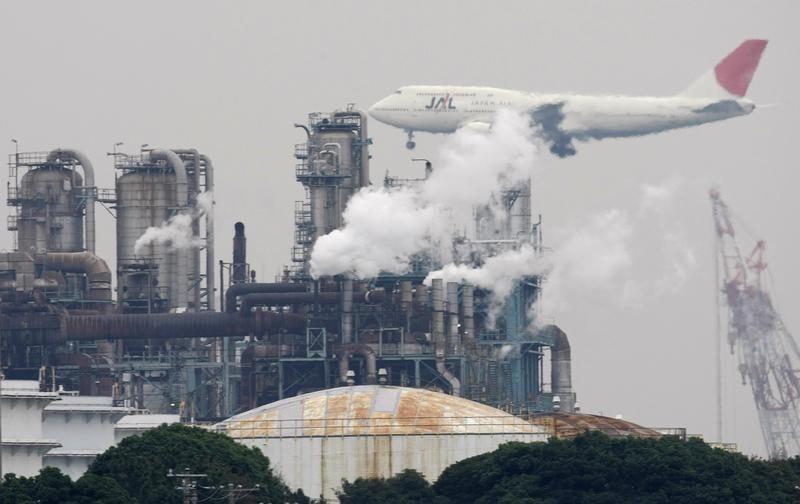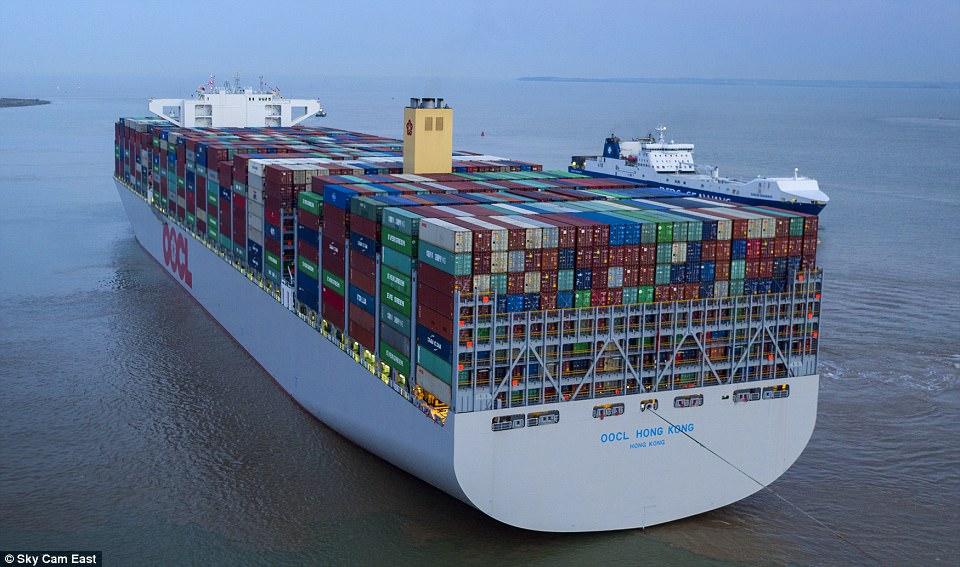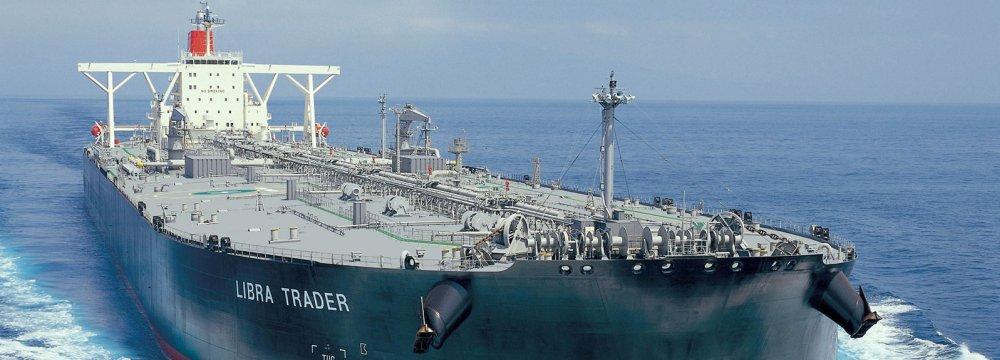 An airplane flies near emissions from a factory at Keihin industrial zone in Kawasaki, south of Tokyo November 12, 2008. REUTERS/Toru Hanai
Japan is responsible for 2.99% of global emissions. International shipping is responsible for 3% - around 1000 million tonnes of CO2 annually (in terms of size, 1 tonne of CO2 makes a cube of gas 8m3). How do ships create the same amount of pollution as one of the world's most industrial countries with a population of 127 million? [caption id="attachment11119" align="aligncenter" width="960"] Container ships move about half of all world trade. The world’s largest is 400m long[/caption] The answer is that nearly everything around us that we use everyday is currently transported by ship - [90% of the world’s trade](https://business.un.org/en/entities/13) is carried by sea. Consider the clothes we are wearing. Most cloths are made in Asia. If you are in Europe, this is a long distance to travel - for example Cambodia is over 8100km and Bangladesh is over 6700km away (if you travelled in a straight line). Food, steel, concrete, fuel, computers, phones, toys - our everyday lives are currently made up of things that have travelled by sea. Amazingly, [up to 50% of the weight of goods shipped](http://ec.europa.eu/eurostat/statistics-explained/index.php/Maritimeportsfreightandpassengerstatistics) around the world is fossil fuels. If emissions from shipping were regulated, oil wouldn't be so cheap and renewable energy would be used much more widely.  An oil tanker
There are over 50,000 ships carrying goods around the world, and many of them are huge. Ships’ engines burn oil which is much thicker and heavier than petrol which we use in cars causing much worse pollution. Shipping is a fast-growing source of greenhouse gases, projected to account for 17% of global emissions by 2050. The good news is that technology has been developed to build much cleaner ships, which do not contribute to climate change so much. Ships' energy consumption and CO2 emissions could be reduced by up to 75% by applying operational measures and implementing existing technologies. However, currently, shipping is not regulated. It is the last sector of the economy that does not have to account for its carbon emissions. Unfortunately, some countries - including Japan - are blocking agreements that will bring forward green technology. Another option is to consume less and manufacture things nearer to where they are used - i.e. stimulate local economies - see - The Future Is Local.  A concept for a solar / electric container ship
The International Maritime Organization is part of the UN – responsible for safety and security as well as rules on pollution. In April they are meeting to decide how whether the shipping industry will bring in rules for cutting greenhouse gas emissions that are as strict as those countries have to follow – making sure ships use the new clean technologies. Some countries are keen to do this. But some shipping companies don’t want to spend money to tackle climate change. Find out more about the IMO meeting here - www.mepc72.com  Climate change effects Japan too



